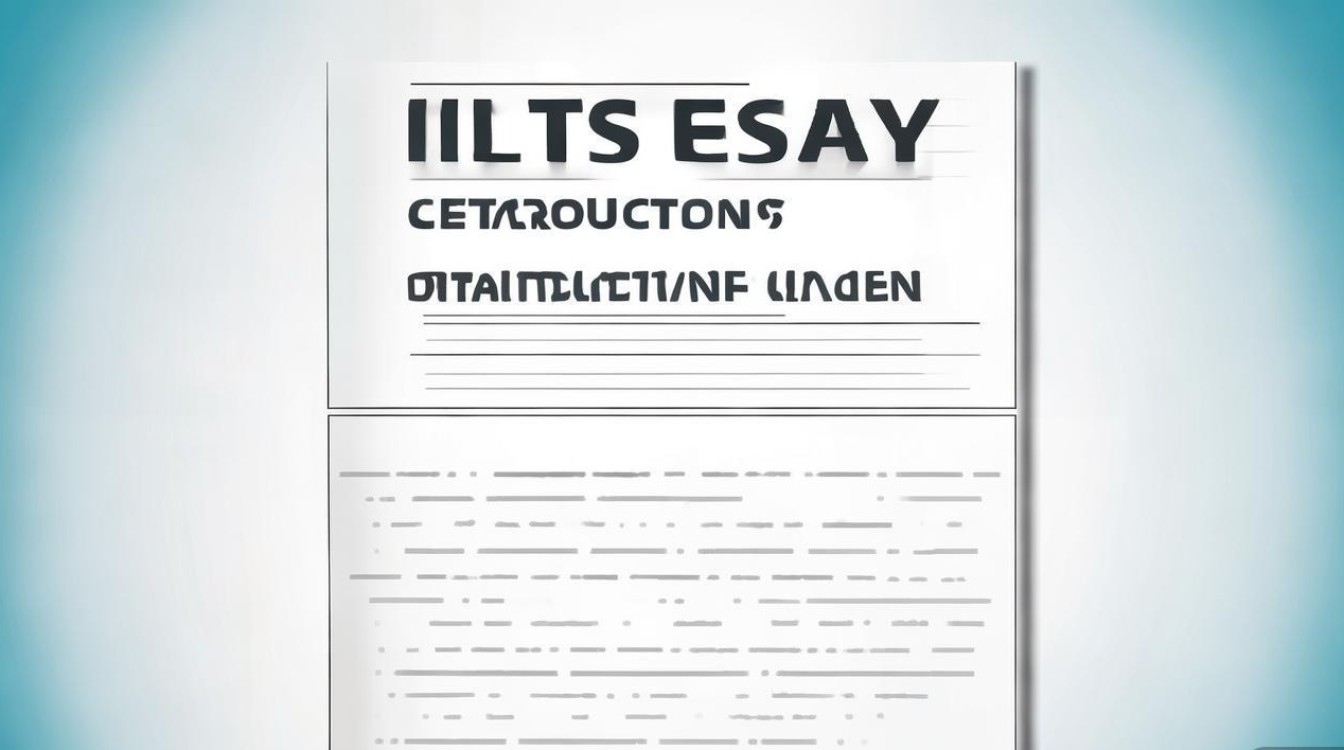下面我将为你详细拆解雅思大作文的模式,从核心结构、段落功能,到高分技巧,并提供一个完整的范文示例。

核心结构:四段式或五段式?
雅思大作文最常用、最稳妥的结构是 四段式 或 五段式,对于大多数考生,四段式 足以应对,也更简洁有力。
四段式结构 (推荐)
这是最经典、最不容易出错的“总-分-总”结构。
-
第一段:引言段
- 功能:引出话题,改写题目,表明你的中心论点。
- 结构:
- 背景句:用更宽泛的语言引出话题。
- 题目改写:用同义词和句式变换,重述题目中的核心观点。
- thesis statement (中心论点):清晰、明确地给出你的观点(同意/不同意,讨论双方利弊,分析原因并提出解决方案等)。
-
第二段:主体段一
- 功能:阐述你的第一个分论点,并进行详细论证。
- 结构:
- 主题句:本段的核心观点,必须直接回应中心论点。
- 解释句:进一步解释你的主题句,说明为什么这个观点成立。
- 举例句:提供一个具体的例子来支撑你的观点(个人经历、社会现象、历史事件等)。
- 小结句:重申本段观点,与主题句呼应。
-
第三段:主体段二
- 功能:阐述你的第二个分论点,并进行详细论证。
- 结构:与主体段一完全相同,但论述的是另一个独立的分论点。
- 主题句 -> 解释句 -> 举例句 -> 小结句
-
第四段:结论段
- 功能:总结全文,重申中心论点,并提出一个最终的展望或建议。
- 结构:
- 总结句:用不同的措辞重述你的中心论点。
- 重申分论点:简要回顾主体段的两个分论点。
- 最终句:提出一个引人深思的结论、建议或预测。
五段式结构
要求“讨论双方观点”(Discuss both views)时,五段式结构能更清晰地展现你的平衡分析能力。
- 第一段:引言段 (同四段式)
- 第二段:主体段一 (观点A)
专门阐述题目中给出的第一个观点,并进行分析。
- 第三段:主体段二 (观点B)
专门阐述题目中给出的第二个观点,并进行分析。
- 第四段:你的立场段
在充分讨论了双方观点后,在这一段明确给出你自己的立场和理由,这是体现你批判性思维的关键部分。
- 第五段:结论段 (同四段式)
段落功能详解与高分句式
引言段
- 目标:30秒内给考官留下好印象,让他明白你要写什么。
- 高分技巧:
- 避免原词照抄:考官每天看几百篇作文,原封不动地抄题目会显得很懒。
- 使用“背景-问题-观点”模板:
- 背景: In contemporary society, the issue of... has sparked a heated debate.
- 问题: Some people argue that..., while others contend that...
- 观点: This essay will argue that... / From my perspective, the former/latter view is more convincing.
主体段
- 目标:逻辑清晰,论证有力,有血有肉。
- 高分技巧:
- 主题句:必须是完整的句子,清晰地表达本段核心思想。
- e.g., One primary benefit of... is that it significantly enhances...
- 论证方法:
- 解释:
This is because...,The reason for this is that... - 举例:
A case in point is...,For instance, take the example of... - 对比:
In contrast, ...,On the other hand, ... - 因果:
As a result, ...,Consequently, ...
- 解释:
- 衔接词:段落之间和句子之间要使用恰当的衔接词,使文章流畅。
- 表递进:
Furthermore,Moreover,In addition - 表转折:
However,Nevertheless,On the contrary - 表总结:
In conclusion,To sum up,Overall
- 表递进:
- 主题句:必须是完整的句子,清晰地表达本段核心思想。
结论段
- 目标:完美收尾,升华主题,不引入新观点。
- 高分技巧:
- 避免使用:
In a nutshell,To conclude(略显口语化),以及In my opinion,I think(在结论中重申观点时,应使用更客观的表述)。 - 使用“重申-展望”模板:
- To wrap up, the arguments presented above demonstrate that...
- 重申: While both perspectives have their merits, it is clear that...
- 展望: Therefore, it is imperative that we... / It is foreseeable that this trend will continue to shape our future.
- 避免使用:
完整范文示例 (四段式结构)
** Some people think that the government should invest money in public services like healthcare and education, but not in the arts. Do you agree or disagree?
范文
(第一段:引言段) In an era of finite public resources, a critical question arises for governments: where should the focus of investment lie? While some advocate for prioritizing essential services such as healthcare and education, others argue that funding for the arts should not be neglected. This essay strongly disagrees with the notion that artistic funding should be cut, positing that a thriving cultural sector is intrinsically linked to national well-being and a vibrant society.
(第二段:主体段一) Firstly, government investment in the arts yields significant economic benefits that indirectly support public services. The cultural and creative industries are substantial economic engines, generating jobs, attracting tourism, and contributing to the national GDP. For instance, cities like Paris and Barcelona are global magnets for tourists, drawn not only by their infrastructure but also by their world-renowned museums, galleries, and festivals. The revenue generated from this tourism can then be channelled back into the public purse, thereby supplementing funds for healthcare and education, rather than competing with them. To defund the arts would be to overlook a powerful source of economic growth.
(第三段:主体段二) Furthermore, the arts play an indispensable role in fostering social cohesion and mental well-being, which are foundational to a healthy population. Public art, music programs in schools, and community theatre projects provide accessible avenues for self-expression and cultural exchange. They help bridge social divides and give a voice to diverse communities. Moreover, in times of stress or hardship, engagement with the arts offers a vital form of respite and emotional support, which can alleviate pressure on mental health services. Therefore, viewing the arts as a luxury rather than a public good is a short-sighted approach that fails to recognize their profound impact on public health.
(第四段:结论段) In conclusion, the argument that governments should choose between funding public services and the arts presents a false dichotomy. As this essay has demonstrated, investment in the cultural sector is not a drain on resources but a strategic investment with tangible economic returns and profound social benefits. A society that neglects its cultural heritage is one that impoverishes itself. Therefore, it is imperative for governments to recognize the symbiotic relationship between a thriving arts scene and a robust public welfare system, ensuring investment in both for a prosperous and healthy future.
记住这个核心模式:清晰的结构 + 充分的论证 + 流通的语言 = 高分作文。
- 结构是骨架:严格按照四段式或五段式来搭建,确保逻辑清晰。
- 论证是血肉:每个主体段都要有明确的观点,并用解释、例子等方法把它撑起来。
- 语言是外衣:使用多样的词汇和句式,并用好衔接词,让文章读起来流畅自然。
多加练习,将这个模式内化为你的写作习惯,你就能在考场上游刃有余。



